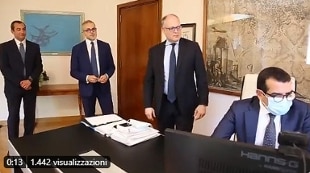- Cgia: between bureaucracy and missed PA payments the cost is 100 billion a year
- Cgia alarm: in 3 months 11 thousand artisans lost but the worst is yet to come
- Open letter to companies: "We want measures". Cgia: craftsmanship collapses, in the month lost 7 billion
- Coronavirus, Cgia Mestre: economic risk, half GDP and revenue generated in the North
Share
by Tiziana Di Giovannandrea June 27, 2020 The Public Administration accelerates its payments, bringing the total amounts paid to businesses to almost 95%. This is what emerges from the latest analysis of the MEF on the payments of commercial invoices received by the PAs in the period 2015-2019, in which, underlines the Ministry of Economy and Finance, the "progressive improvements already highlighted in previous updates" are confirmed.Based on the data from the information system of the Platform for trade credits recorded in May 2020, the invoices received by the PA in 2019 are 29.1 million, for a total amount due of 148.2 billion. The bills paidthey amount to 24.5 million, equal to 140.4 billion euro, which corresponds to approximately 94.8% of the total amount.
According to the MEF, the weighted average time for the payment of invoices by Public Administrations decreased in 2019 to 48 days, from 55 in 2018, with an average delay of 1 day compared to the deadline, with a significant improvement for Healthcare. "Even taking into account the payment queues not yet made at the time of the survey (which could cause the data series to be revised upwards), the payment times of the invoices issued in 2019 - the Ministry of Economy still highlights - confirm the decreasing trend the previous four-year period, in which the average payment time had already fallen from 74 days in 2015 to 55 in 2018. Correspondingly, the average delay time (one day in 2019) had already decreased from 27 days in 2015 to 7 in 2018 ".
Furthermore, "In line with the reduction in payment times," emphasizes the Mef, "the share of invoices paid by PAs within the terms established by EU and national legislation is constantly growing. The overall improvement can also be seen at the level of the individual sectors. this increase is particularly important for the entities of the National Health System, the percentage of which, calculated in terms of amount, goes from 50.5% in 2015 to 77.1% in 2019.
Cgia, on debts from Mef partial and average data unlikely
The Cgia di Mestre disputes the MEF data on the 2019 payments of the commercial invoices received from the PAs. "Whenever the Ministry of Economy and Finance addresses the issue of the public administration's commercial debts, it presents partial and average data that are unlikely" in a note signed by Paolo Zabeo , Coordinator of the Craftsmen's Study Office of Mestre. "In 2019 our Public Administration sold out mediament and in 48 days its suppliers, so with a single day of delay? But what are they talking about? Obviously - says Paolo Zabeo, now we understand why the EU Court of Justice condemned us last January. At the MEF they continue to ignore the provisions of the European Directive against late payments in commercial transactions between public administrations and private companies "." We remember - explains Zabeo - that the EU Directive imposes PA payments within 30 days, up to 60 only in the case of transactions relating to the health sector "." So, if last year our PA liquidated companies in 48 days, it means that compared to the provisions of the law it paid suppliers, not from the health sector, with 18 days late ", concludes Zabeo.
" As always - notes the secretary of the Cgia di Mestre Renato Mason - the MEF plays on the misunderstanding. They claim to have paid a day late, comparing, most likely, the average payment times made with the deadline set by the contract which, it seems to understand, in 2019 was 47 days. But this is contrary to the law, because suppliers must be paid within 30 days ", he concludes.

